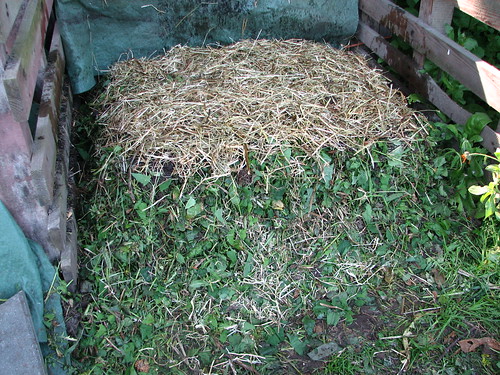Hot Compost Tips & Heaps
Heat in a compost heap is good. A hot compost tip will kill off pathogens and many unwanted seeds whilst it creates good friable compost.
What is a Hot Compost Tip
- Hot compost heaps are just that, hot, they can be so hot you can’t keep your hand in (though why you should want to put your hand in the middle of a compost heap I am not sure).
- The heat is generated by the decomposition process helped by all the biological activity. Microbes, worms and insects need food, air and water to generate this activity. They feed on the plant matter or one another so that takes care of food.
- Much garden refuse contains enough water but if the compost is dry or the weather dries the compost out then some extra water can be added.
- A hot compost process encourages quick breakdown and recycling of compostable waste.
Turning The Compost Heap
- To get air into the compost as it rots down the heap needs to be turned after an initial decomposition period say 8-10 weeks
- Special ‘Tumbler compost makers’ and spinners are now available so that compost can be turned within a plastic drum. You turn the drum daily or weekly to aerate the rotting compost. This speeds up the composting process significantly.
- Turning the compost stops the top forming a crust that fails to rot
- The compost should be turned so that any compost at the sides or back is brought into the middle so decomposition is even and homogenious
- Turning the compost gives a chance for excess water to be redistributed so the heap doesn’t smell
- If the heap is large turning the top two thirds on to a separate pile may leave one third compost ready to use.
- Compost compacts and reduces in size by at least a third as it rots. Without turning it can be more compacted than your own soil.

Credits
layered aerobic compost by adstream CC BY-NC-ND 2.0
